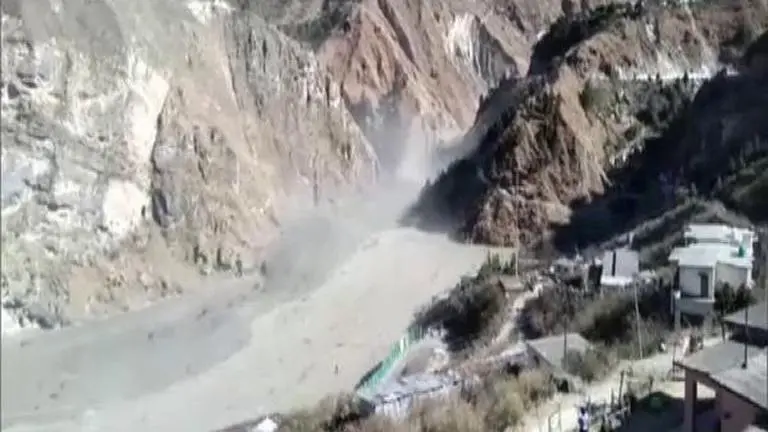Updated 7 February 2021 at 20:05 IST
Rishiganga hydro project washed away by glacier burst in Uttarakhand but no danger of downstream flooding: NCMC
A 13.2 MW small hydro project on the Rishiganga river was swept away in the glacier burst in Uttarakhand on Sunday, but there is no danger of floods in the downstream areas as the water level has been contained.
- India News
- 3 min read

A 13.2 MW small hydro project on the Rishiganga river was swept away in the glacier burst in Uttarakhand on Sunday, but there is no danger of floods in the downstream areas as the water level has been contained.
This was conveyed to the National Crisis Management Committee (NCMC), headed by Cabinet Secretary Rajiv Gauba, at an emergency meeting held here on Sunday evening.
The NCMC was also informed that people trapped in a hydropower project tunnel were rescued by the Indo Tibetan Border Police (ITBP), while efforts are on to rescue those trapped in another tunnel. The operation is being coordinated by the Army and the ITBP, an official spokesperson said.
All-out efforts are being made to ensure that all missing people are traced and accounted for.
Advertisement
The glacier burst led to a rise in water levels in the river Rishiganga, which washed away the Rishiganga small hydro project of 13.2 MW. The flash flood also affected the downstream hydro project of NTPC at Tapovan on the river Dhauli Ganga, which is a tributary of the river Alaknanda, the spokesperson said.
However, there is no danger of downstream flooding, and the rise in water level has been contained, as per the information given by the Central Water Commission (CWC), the spokesperson said.
Advertisement
There is also no threat to the neighbouring villages.
At the same time, the agencies of the central and the state governments were asked to keep a strict vigil on the situation, and a team from the DRDO, which monitors avalanches, is being flown in for surveillance and reconnaissance.
The Managing Director of the NTPC has been asked to reach the affected site immediately.
Two teams of the NDRF (35-45 personnel each) have been sent and three additional teams have been flown in from Hindon airport in Ghaziabad.
More than 200 ITBP personnel are on the spot, and one column of the Engineering Task Force (ETF) of the Army, with all rescue equipment, has been deployed.
The Indian Navy divers are being flown in and Indian Air Force (IAF) aircraft are on standby, the spokesperson said.
The NCMC met to review the situation arising out of the natural disaster in Uttarakhand.
A part of the Nanda Devi glacier broke off at Joshimath in Uttarakhand's Chamoli district on Sunday, leading to a massive flood in the Dhauli Ganga river and causing large-scale devastation in the upper reaches of this ecologically fragile Himalayan region.
The Chief Secretary of the Uttarakhand government briefed the NCMC through video conference on the ground situation as well as the action taken by them after the incident to evacuate people and contain the damage caused by the flooding.
The India Meteorological Department informed that there is no rainfall warning in the region for the next two days.
The cabinet secretary directed the agencies to work in close co-ordination and extend all requisite assistance to the state administration.
He emphasised the need to account for all missing persons and ensure that those trapped are rescued at the earliest. Gauba directed that surveillance should be maintained till rescue efforts are completed and the situation returns to normalcy.
The meeting was attended by the Union Home Secretary, Secretary, Ministry of Power, Director General of the ITBP, members of the NDMA, DG of the NDRF, chairman of the CWC, DG of the IMD and chairman of the DRDO, along with other senior officers.
According to Uttarakhand Chief Minister Trivendra Singh Rawat, seven bodies have been recovered while at least 125 people were missing.
Image credit: ANI
Published By : Press Trust Of India
Published On: 7 February 2021 at 20:05 IST
